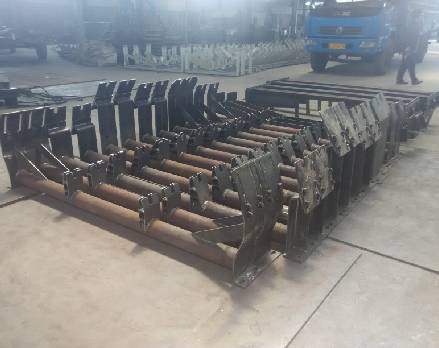 Afrikaans
Afrikaans  Albanian
Albanian  Amharic
Amharic  Arabic
Arabic  Armenian
Armenian  Azerbaijani
Azerbaijani  Basque
Basque  Belarusian
Belarusian  Bengali
Bengali  Bosnian
Bosnian  Bulgarian
Bulgarian  Catalan
Catalan  Cebuano
Cebuano  Corsican
Corsican  Croatian
Croatian  Czech
Czech  Danish
Danish  Dutch
Dutch  English
English  Esperanto
Esperanto  Estonian
Estonian  Finnish
Finnish  French
French  Frisian
Frisian  Galician
Galician  Georgian
Georgian  German
German  Greek
Greek  Gujarati
Gujarati  Haitian Creole
Haitian Creole  hausa
hausa  hawaiian
hawaiian  Hebrew
Hebrew  Hindi
Hindi  Miao
Miao  Hungarian
Hungarian  Icelandic
Icelandic  igbo
igbo  Indonesian
Indonesian  irish
irish  Italian
Italian  Japanese
Japanese  Javanese
Javanese  Kannada
Kannada  kazakh
kazakh  Khmer
Khmer  Rwandese
Rwandese  Korean
Korean  Kurdish
Kurdish  Kyrgyz
Kyrgyz  Lao
Lao  Latin
Latin  Latvian
Latvian  Lithuanian
Lithuanian  Luxembourgish
Luxembourgish  Macedonian
Macedonian  Malgashi
Malgashi  Malay
Malay  Malayalam
Malayalam  Maltese
Maltese  Maori
Maori  Marathi
Marathi  Mongolian
Mongolian  Myanmar
Myanmar  Nepali
Nepali  Norwegian
Norwegian  Norwegian
Norwegian  Occitan
Occitan  Pashto
Pashto  Persian
Persian  Polish
Polish  Portuguese
Portuguese  Punjabi
Punjabi  Romanian
Romanian  Russian
Russian  Samoan
Samoan  Scottish Gaelic
Scottish Gaelic  Serbian
Serbian  Sesotho
Sesotho  Shona
Shona  Sindhi
Sindhi  Sinhala
Sinhala  Slovak
Slovak  Slovenian
Slovenian  Somali
Somali  Spanish
Spanish  Sundanese
Sundanese  Swahili
Swahili  Swedish
Swedish  Tagalog
Tagalog  Tajik
Tajik  Tamil
Tamil  Tatar
Tatar  Telugu
Telugu  Thai
Thai  Turkish
Turkish  Turkmen
Turkmen  Ukrainian
Ukrainian  Urdu
Urdu  Uighur
Uighur  Uzbek
Uzbek  Vietnamese
Vietnamese  Welsh
Welsh  Bantu
Bantu  Yiddish
Yiddish  Yoruba
Yoruba  Zulu
Zulu Understanding the Role of Idlers in Conveyor Belt Systems for Efficient Material Handling
The Importance of Idlers in Conveyor Belts
Conveyor belts are an essential component in many industries, facilitating the smooth and efficient transportation of materials. A critical part of these systems is the idler, which plays a significant role in the overall effectiveness and reliability of conveyor operations. Understanding the function and benefits of idlers can help organizations optimize their conveyor systems and improve productivity.
The Importance of Idlers in Conveyor Belts
Moreover, idlers provide crucial support to the belt and the materials it carries, distributing the weight evenly across the system. This distribution minimizes the risk of excessive force on any one part of the belt, reducing strain and extending the life of the components. Well-maintained idlers can significantly decrease the likelihood of conveyor failures, allowing companies to maintain consistent production schedules without costly interruptions.
idler in conveyor belt

Idler selection is also vital for optimal performance. With various types available, including flat, troughing, and return idlers, businesses must choose the right idler for their specific application. For instance, troughing idlers, which form a “V” shape, are particularly effective for handling bulk materials, as they help contain the load and prevent spillage. On the other hand, flat idlers are more suited for transporting packaged goods and lighter items. Improperly selected idlers can lead to inefficiencies and increased operational costs.
Regular maintenance of idlers is essential to ensure their continued effectiveness. This includes checking for wear, ensuring proper lubrication, and adjusting tension as needed. Neglecting idler maintenance can result in increased friction, which can cause premature wear on the belt and other components, leading to costly repairs and downtime. By dedicating time and resources to regular maintenance, companies can enhance the longevity of their conveyor systems.
In addition to maintaining the physical aspects of idlers, organizations should also consider the impact of modern technologies on conveyor systems. With advancements in monitoring and automation, companies can now utilize sensors and data analytics to keep track of idler performance and predict potential failures before they occur. This proactive approach not only improves system reliability but also enhances overall operational efficiency.
In conclusion, idlers are integral to the functionality and longevity of conveyor belt systems. By providing support, ensuring alignment, and facilitating proper material handling, they contribute significantly to the efficiency of industrial operations. Companies should prioritize idler selection, maintenance, and integration of technology to maximize the performance of their conveyor systems, ultimately leading to increased productivity and reduced operational costs. As industries continue to evolve, the importance of idlers in conveyor belts remains a constant, highlighting their vital role in modern manufacturing and logistics.
-
Revolutionizing Conveyor Reliability with Advanced Rubber Lagging PulleysNewsJul.22,2025
-
Powering Precision and Durability with Expert Manufacturers of Conveyor ComponentsNewsJul.22,2025
-
Optimizing Conveyor Systems with Advanced Conveyor AccessoriesNewsJul.22,2025
-
Maximize Conveyor Efficiency with Quality Conveyor Idler PulleysNewsJul.22,2025
-
Future-Proof Your Conveyor System with High-Performance Polyurethane RollerNewsJul.22,2025
-
Driving Efficiency Forward with Quality Idlers and RollersNewsJul.22,2025





























